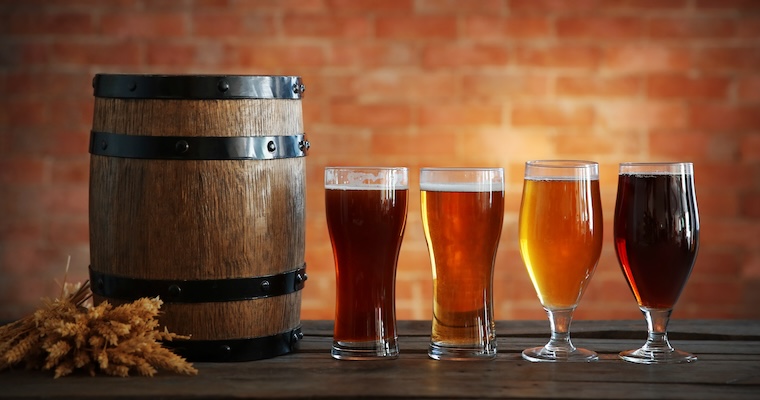Authenticity Lessons From the Craft Beer Industry

The first rule of authenticity is that you never talk about authenticity; let enthusiastic third parties do the talking for you.
EDITOR'S NOTE: This article was produced in partnership with Strategic Entrepreneurship Journal, a leading academic journal, as part of our effort to highlight actionable cutting-edge research on entrepreneurship. Click here to read other insights from SEJ.
From ancient Mesopotamia through the onset of the Industrial Revolution, craft-based industries have been a path to prosperity. Today, craft-based ventures attract a growing number of consumers who yearn for “authenticity” in the products they buy and from the companies that make them. In fact, recent studies have shown a link between products perceived as “authentic” and commercial success. The popularity of web sites like Etsy, which gives crafters a venue for selling their wares, is testament to this.
But today’s companies that want to be seen as authentic face a catch-22: if they try too hard to shape an authentic image via their marketing, they turn off their key customer base, which sees self-promotion as inauthentic. And if their authenticity pays off so well that they want to grow or cash out, the required business and strategic decisions can easily ruin their image once their devotees get wind of it.
Our research sought to find out how companies whose products depend on being perceived as “authentic” manage to shape this perception and hold on to it even when they want to scale or reap financial rewards. We focused on an industry in which authenticity is a coveted attribute that attracts public adulation and boosts sales: the craft beer industry, including microbreweries that produce less than 15,000 barrels a year and regional breweries that produce between 15,000 and 6 million barrels a year.
We discovered that the first rule of authenticity is that you never talk about authenticity; let enthusiastic third parties do the talking for you. The second rule is that along with best sellers, your portfolio must also include experimental products with limited appeal but that demonstrate your continuing commitment to your craft (Voodoo Donut Maple Bacon Ale, anyone?) Third, instead of talking about your authenticity, do things that signal your authenticity and your commitment to the community, as Sierra Nevada did when they introduced a new beer formulated by Trappist monks and donated the profits to help the monks restore a monastery.
Authenticity: Difficult to Get, Easy to Lose
Products and companies deemed authentic typically attract people who are fed up with how modern things have become and yearn for a simpler time – witness the growing popularity of Chicago blues clubs, retro-designed baseball stadiums, and farmer’s markets. In the beer industry, craft beers have become popular because a key segment of beer drinkers have turned against mass producers whom they see as too preoccupied with profit.
Lagunitas Brewing Co., one of the businesses we’ve studied, tapped into this disenchantment and became wildly successful through its craft beers. But in 2015, Lagunitas filed a lawsuit against Sierra Nevada Brewing Co., a competitor, because of a new Sierra Nevada IPA label that Lagunitas claimed copied one of its own labels. The backlash from Lagunitas fans who saw such a move as greedy and commercial – the antithesis of authentic – was swift, prompting Lagunitas to withdraw the lawsuit and apologize publicly to its customers within 24 hours.
Similarly, consumers who value authenticity can quickly defect if a product or company gets acquired by a larger, more corporate entity. For example, a craft beer company that lets itself be acquired by a larger brewing company is often seen as a “sellout” and loses cachet and appeal.
An audience’s perception of authenticity includes a widespread understanding, shaped over time, of the qualities that make certain people, products, and organizations authentic. Companies are rewarded with adulation and business if they know how their audience defines authenticity and play by those rules, which might include shunning business practices that would be a smart move for other types of firms. Businesses must craft an authentic identity for themselves, but in a way that doesn’t call attention to itself.
What We Studied
We looked at thousands of online reviews about craft beers and their breweries on the Beer Advocate site, encompassing approximately 26,000 unique reviewers, 1.1 million individual reviews, 42,000 different beers, and 2,000 unique craft breweries. We then screened these reviews for certain terms that past researchers have codified into the core language of authenticity: words such as creative, genuine, authentic, artful, unique, and others. We also looked at the number of awards won at the most prestigious craft beer festival, the Great American Beer Festival, and the number of different beer styles the brewery was willing to make, which demonstrated its willingness to “make beer for beer’s sake” without commercial consideration. In a market anchored around the rejection of mass-produced industrial beer, authenticity is inferred from clearly disassociating a brewery from large incumbents like Anheuser Busch and Molson Coors. So we also marked up breweries that have not sold equity to mass producers, as well as coded beer names that convey anti-mass produced beer sentiments like Breckenridge Brewery’s Small Batch 471 and Morgantown Brewing Company’s Small Batch-Honey Raspberry Amber Ale.
What We Found
Our analysis showed that breweries that stayed independent, won many medals for their beers, and those that produced a large variety of beer styles were viewed as much more authentic, and scored higher on audience appeal. That’s true even after taking into account consumers’ overall perceptions of product quality, market popularity, and scale of operations. A related finding is that breweries whose signature beer is an American lager get low scores on both authenticity and appeal because of the association this product evokes with large mass producers. By contrast, breweries that offer products with oppositional (i.e., anti-mass) beer names get higher marks.
Takeaways
Companies, political candidates, academic institutions and others that need to be perceived as authentic can take these cues from our research of the craft brewing industry, and from other research into authenticity.
Stay privately owned if possible. Organizations that are beloved for their authenticity are often downgraded if they are acquired by a larger entity, which by nature must operate in ways that are deemed “corporate” or “profit-seeking,” which the audience for authenticity abhors.
Don’t promote your authenticity in your marketing. Instead, understand which influential communities or enthusiasts confer it, understand what’s important to them, and let this inform how you operate and what you make. Let your most enthusiastic customers and enthusiasts do the talking for you.
Walk the walk. Do things that are valuable to the community and that showcase the values that resonate most with your core audience, as Sierra Nevada did when it partnered with monks on crafting a new beer and donating profits from it to the monks themselves. Make these efforts unobtrusive; don’t trumpet them. Hope for press coverage and good word of mouth through your fans.
Experiment with products or concepts that show your commitment to your field, even if they never make money. Like funky beer flavors that will never sell well, experimental technologies that may not pan out, or “concept cars” that will never go on the market, this signals that you are devoted to your craft, willing to push its boundaries, and adding to the body of knowledge about it.
Finally, a takeaway for entrepreneurs and for people toiling in corporate jobs: Today many segments of consumers want products and companies that remind them of simpler times. Opportunities abound for new ventures that offer them that – but it requires a deep understanding of what they value and a willingness to play by their rules.
Explore the Research
Organizational authenticity: How craft-based ventures manage authentic identities and audience appeal. Strategic Entrepreneurship Journal, January 2024.




